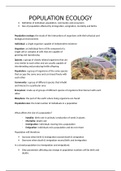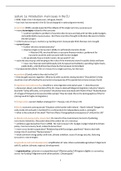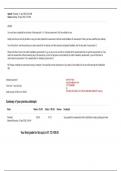Summary
Summary Grade 12 Biology: Population Ecology
- Course
- Matric
- Institution
- St Stithians College (Stithian)
An in-depth summary of Population Ecology, including definitions, factors that affects a population, the methods of calculating the size of a population, the relationships between different species, ecological succession and social organization. These notes are summarized from the grade 12 Mind Act...
[Show more]






